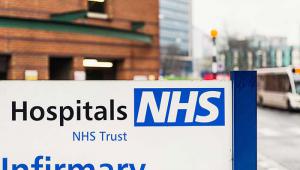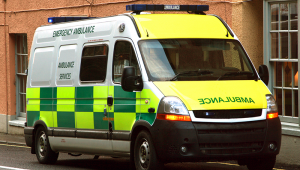NHS trusts in England ended the first quarter of the 2018-19 financial year with a deficit of £814m - £78m (10%) worse than the same quarter last year, according to NHS Improvement’s quarterly update, released today.
The regulator’s figures showed the significant “workforce challenge” facing the health service, with a total of 108,000 vacancies in the NHS (about 9.2% of all posts).
The vacancy rate for nurses was the highest, rising from 35,794 (10.2% of posts) in the last quarter of 2017-18 compared to 41,722 (11.8%) in the first quarter of this financial year.
Siva Anandaciva, chief analyst at the health think-tank the King’s Fund, called the “widespread and growing nursing shortages” a potential “national emergency”.
It was “symptomatic of a long-term failure in workforce planning”, she added.
Chris Hopson, chief executive of the membership organisation NHS Providers, agreed, saying: “Trusts tell us they are most worried about the workforce shortages they face, and it’s a real concern that these figures have shown such a big increase in vacancy levels.”
Vacancies for doctors also jumped from 9,982 (8.1% of all posts) in January to March this year to 11,576 (9.3%) from April to June.
NHS Improvement expected the staffing shortages increases to continue throughout the 2018-19 financial year.
Tom Sandford, director of the Royal College of Nursing in England, added: “This report paints a bleak picture of rising demand and unsustainable workforce shortages, and betrays a huge over-reliance on bank and agency staff in England.
“The government must immediately investigate this sudden spike in vacancies.”
Although the quarterly performance report stated that agency costs had “steadily decreased” since 2015, NHS providers in England had spent £599m on agency costs in the first quarter of 2018-19 - slightly up on the £592m reported for the same period in 2017/18.
But the update noted: “The reduction in agency staff costs since 2015 is a considerable achievement in view of record demand and extreme pressure on the acute sector.”
NHS Improvement also noted an increased demand for A&E services, with more than 1.14 million emergency admissions to A&E between April and June - a 6.2% increase from the same period last year.
Total non-elective activity admissions from all sources, not just A&E, also increased by 5.1% from the first quarter last year.
Niall Dickson, chief executive of the trade organisation NHS Confederation, which represents organisations across the healthcare sector, said: "We cannot go on like this.
“This is the story of an unsustainable system. The NHS in England is seeing more patients than ever within four hours at A&E, but it is not still meeting the 95% target, nor indeed many other targets.”
NHS Improvement did acknowledge that while the deficit had increased this was still £22m better than planned for at the beginning of the year.
NHS staff also managed to see more people in under four hours than the same period last year, according to NHS Improvement.
Health secretary Matt Hancock this week announced £145m for NHS trusts to help cope with increased demand caused by winter pressures.
A Department of Health and Social Care spokesperson said: “We are training 25% more doctors, nurses and midwives, giving a significant pay rise to over a million staff, and investing in the future of the NHS so that by 2023/24 it will receive £20.5bn a year more than it does now.”











